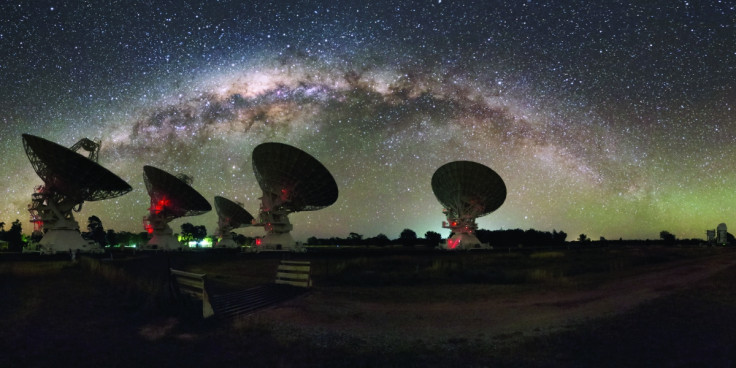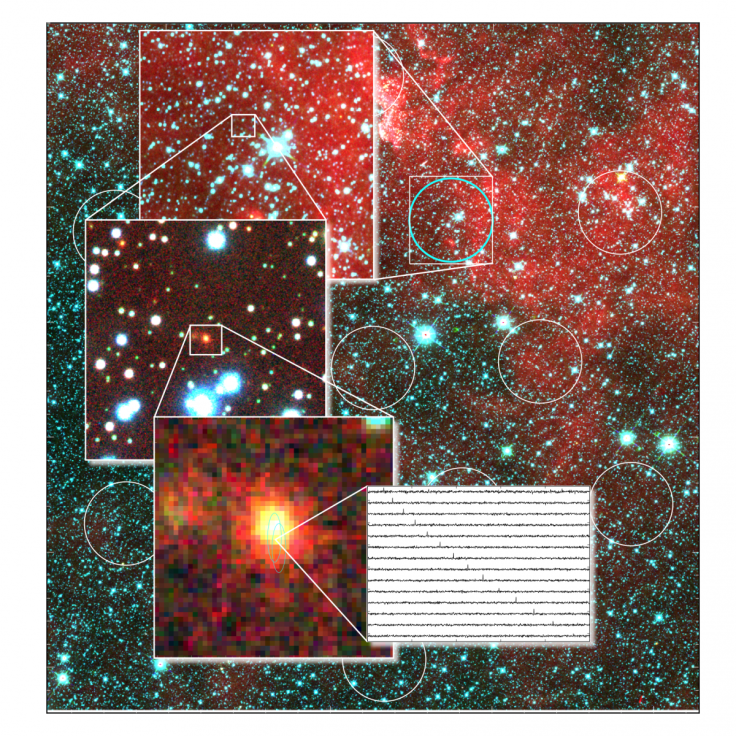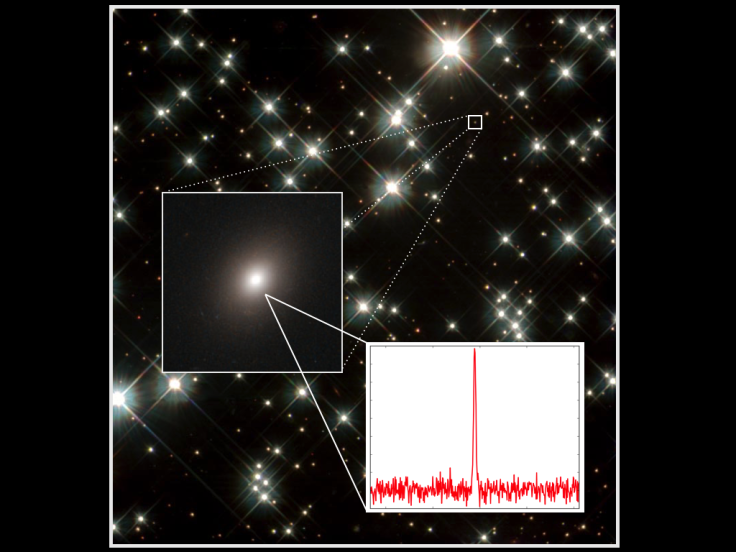FRBs: Location of mystery space signal discovered along with universe's missing matter

For the first time, scientists have pinpointed the location from which a fast radio burst (FRB) came from. They were able to find the location, host galaxy and redshift for FRB 150418, showing it came from elliptical galaxy six billion light years away.
Lasting just a few milliseconds, FRBs are radio signals from deep space – the source of which is unknown. One was detected by Australia's CSIRO in April last year through the Parkes radio telescope. Following this scientists across the globe beginning looking for this same strange signal. It led to widespread speculation about what could have caused them – including pulsars, magnetars (stars with a very strong magnetic field) and aliens.
In total, just 17 have been found. Sixteen of these were only found through data long after they had passed, however, meaning where they originated from could not be determined.
Evan Keane, from the UK's Square Kilometre Array Organisation, and colleagues were looking to find a FRB almost instantaneously. "The problem with finding these fast radio bursts in the past is that we were finding them in data that we recorded at the telescope, but we found them months or even years later," he told IBTimes UK. "That's because we didn't know they were there, so we didn't look at first. Then our software for looking at the data wasn't good enough. But over time that got better."

He set up a project two years ago to avoid having a lag of several months between the FRB event and it being detected through data. "I wanted there to be zero lag," he said. Published in the journal Nature, researchers have now announced the discovery of an FRB that was caught just seconds after hitting the telescope
This allowed them to trace it back to where it came from and, importantly, its redshift – the displacement of spectral lines towards longer wavelengths in radiation from objects in space. "Redshift gives us the distance," Keane said. "Previously we didn't have a distance, we had a guesstimate."
The findings showed FRB 150418 came from in an elliptical galaxy with a redshift of 0.492. "[Elliptical galaxies] tend to be older and star formation is slowed down or ceased, which is what we think has happened in this case. The stars are old. It's about six billion light years away – quite far. That's about half the age of the universe."
Because the FRB took six days to fade, they do not think it came from a pulsar, challenging another theory about the source of these signals. Instead, the team believes this FRB came from a merger event, where two stars that are orbiting each other come together. This also suggests there are at least two different sources of FRBs.

Analysing FRB 150418 (and its redshift) also allowed the team to solve another puzzle about the universe – the case of the missing matter. Current models say the universe is made up of 70% dark energy, 25% dark matter and 5% normal matter, or . However, we can only see about half of the normal matter that makes up the universe.
Features of the universe are imprinted on the FRB as it travelled through space, so the scientists were able to measure these features – in particular the frequency-dependent dispersion, which shows how much material the FRB has gone through.
The redshift meant the scientists could measure how dense the material was between the source of the FRB and Earth. Findings showed it fits in with current models – effectively locating this missing matter. "The good news is our observations and the model match, we have found the missing matter," Keane said.
The team now hopes to continue searching for more FRBs to find out where they came from and get a better idea of their different sources, including the possibility of repeat FRBs from magneter flares: "To answer these questions, and others such as whether or not some or all FRBs are standard candles, this study will need to be repeated for a large number of FRBs, and requires continued monitoring of the known FRB fields," the paper concludes.
More about FRBs
© Copyright IBTimes 2025. All rights reserved.






















